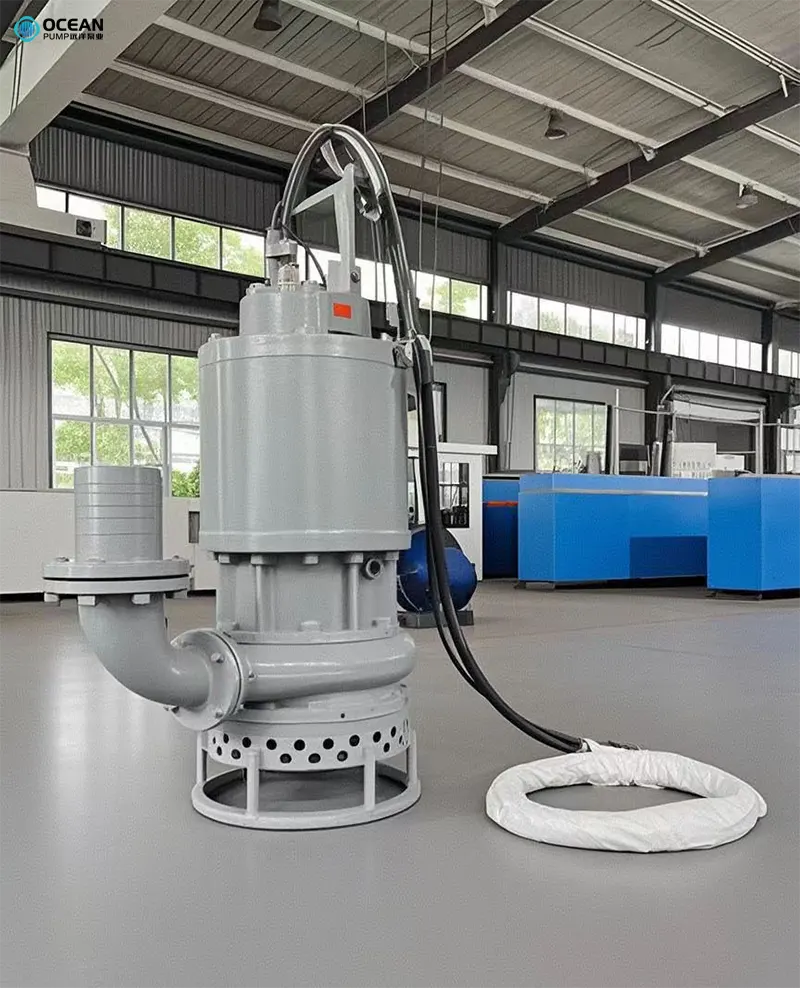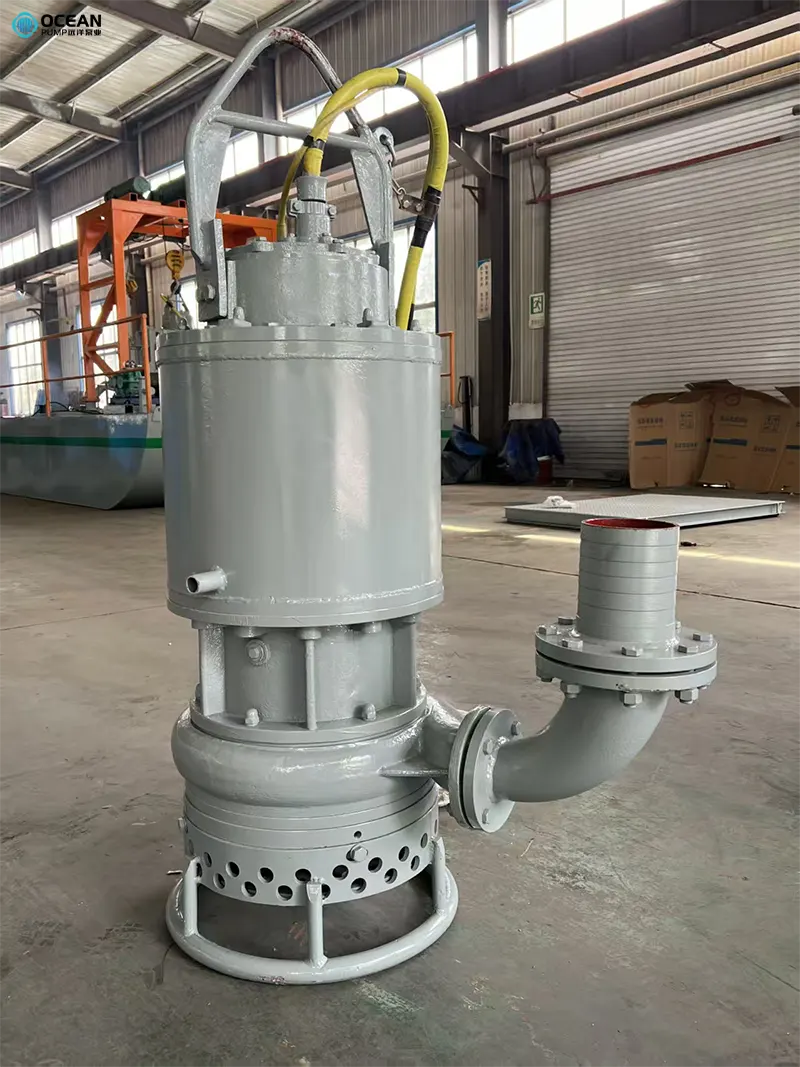What Is the Difference Between Sand Pump and Slurry Pump
Keywords: Sand Pump and Slurry Pump
Meta: Discover key differences between sand pump and slurry pump: media, design, applications. Choose the right pump for mining, dredging & more!

In industries such as mining, dredging, construction, and wastewater management, pumps play a critical role in transporting abrasive and solid-laden materials. Among the various pump types, sand pumps and slurry pumps are often confused due to their shared ability to handle challenging media. However, these pumps are designed for distinct purposes, with differences in construction, application, and performance characteristics. Understanding these distinctions is essential for selecting the right equipment to optimize efficiency, reduce maintenance costs, and ensure operational success. This comprehensive guide explores the key differences between sand pumps and slurry pumps, delving into their technical specifications, design features, and practical applications to provide valuable insights for industry professionals and decision-makers.
1.Overview of Sand Pump and Slurry Pump
Both sand pumps and slurry pumps are centrifugal pumps engineered to handle abrasive materials, such as sand, gravel, or solid particles suspended in a liquid medium. Their robust construction and specialized components allow them to operate in harsh environments where standard water pumps would fail due to wear or clogging. Despite these similarities, their design and functionality are tailored to specific types of media and operational demands.

Shared Characteristics
Before diving into the differences, it's important to highlight the common features that make sand pumps and slurry pumps suitable for heavy-duty applications:
Centrifugal Design: Both utilize a rotating impeller to generate centrifugal force, propelling the medium through the pump and into pipelines.
Wear-Resistant Materials: Components are made from high-chrome alloys, rubber linings, or other durable materials to withstand abrasion.
Solid-Handling Capability: Designed to transport media containing solid particles, ranging from fine sediments to coarse aggregates.
Heavy-Duty Construction: Feature larger impellers, robust shafts, and reinforced casings to handle high-viscosity and abrasive fluids.
Despite these shared traits, sand pumps and slurry pumps diverge significantly in their design philosophy, material handling capacity, and industrial applications.
2.Key Differences Between Sand Pump and Slurry Pump
2.1 Media Composition and Particle Size
Sand Pumps: Large, Coarse Particles
Sand pumps are specifically engineered to handle media with large, coarse particles, such as sand, gravel, or metal slag, where particle sizes can range from 1 mm to over 50 mm in diameter. According to a 2024 study by Taian Ocean Pump, sand pumps are optimized for continuous transport of highly abrasive materials that general slurry pumps cannot convey due to particle size limitations. For instance, in dredging operations, sand pumps can handle gravel with a specific gravity of 2.65 and particle sizes up to 100 mm, ensuring efficient extraction from riverbeds or quarries. Their design prioritizes wide flow paths and open impellers to prevent clogging and minimize wear.
Slurry Pumps: High-Solid, Viscous Mixtures
Slurry pumps are designed to transport slurries¡ªmixtures of fine to medium-sized solid particles (typically 1 micron to 10 mm) suspended in a liquid, often water. Slurries can have solid concentrations exceeding 50% by weight, with viscosities ranging from 1,000 to 5,000 centipoise (CPS). A 2023 report by An Pump Machinery notes that slurry pumps excel in handling high-density, abrasive slurries, such as those found in mining (e.g., copper ore slurry) or wastewater treatment (e.g., sewage sludge). Their impellers and casings are optimized for smaller particles and higher solid concentrations, ensuring stability under harsh conditions.
Practical Implications
Sand Pumps: Ideal for applications requiring the transport of large, coarse aggregates, such as sand mining or river dredging, but less effective for high-viscosity slurries.
Slurry Pumps: Suited for viscous, solid-laden slurries with finer particles, such as tailings in mineral processing, but may clog or wear rapidly when handling oversized particles.

2.2 Impeller and Flow Path Design
Sand Pumps: Open Impellers and Wide Channels
Sand pumps feature open impellers with fewer, thicker vanes to accommodate large particles and prevent clogging. A 2024 Eddy Pump guide highlights that sand pump impellers are designed with wide flow paths, allowing particles up to 12 inches to pass through without obstruction. The impeller's peripheral speed is kept low (900¨C1,200 RPM) to reduce wear from abrasive materials like quartz sand (Brinell hardness ~800). Additionally, sand pumps often incorporate agitators or cutters to dislodge compacted sediments, enhancing suction efficiency in underwater applications.
Slurry Pumps: Closed or Semi-Open Impellers
Slurry pumps typically use closed or semi-open impellers with adjustable clearances to maintain efficiency when handling viscous slurries. According to a 2021 Crane Engineering study, slurry pump impellers are larger and thicker than those in standard centrifugal pumps, with vane designs optimized for high solid concentrations (up to 60% by weight). The flow path is narrower to generate higher pressure for transporting dense slurries over long distances, but this makes them prone to clogging with larger particles.
Practical Implications
Sand Pumps: Open impellers and wide channels ensure reliable transport of coarse materials but may reduce efficiency for high-viscosity fluids.
Slurry Pumps: Closed impellers provide high pressure and efficiency for viscous slurries but are less suited for oversized particles due to narrower flow paths.
2.3 Material Construction and Durability
Sand Pumps: Heavy-Duty, Wear-Resistant Alloys
Sand pumps are constructed with ultra-durable materials to withstand the abrasive impact of large particles. High-chrome alloys (25¨C30% chromium, Brinell hardness 600¨C700) are commonly used for impellers and casings, offering 30% greater wear resistance than standard steel, per a 2024 KSB GIW report. Some sand pumps, like those from Taian Ocean Pump, feature replaceable wear plates to extend service life in high-abrasion environments, such as sand quarrying (average pump life: 1,500¨C2,000 hours). Rubber linings are less common due to their inability to handle coarse aggregates.
Slurry Pumps: Versatile Material Options
Slurry pumps offer a broader range of material options, including high-chrome alloys, rubber linings, and duplex stainless steel, to handle both abrasive and corrosive slurries. A 2023 FluidFlow study notes that rubber-lined slurry pumps are ideal for applications with smaller particles ( < 5 mm) and corrosive fluids (pH 4-9), such as chemical processing, while high-chrome pumps suit abrasive mining slurries. Duplex stainless steel is used for highly acidic or alkaline slurries (pH < 3 or > 10), extending pump life by 25% in corrosive conditions.
Practical Implications
Sand Pumps: Prioritize high-chrome alloys for maximum abrasion resistance, making them durable for coarse media but less versatile for corrosive fluids.
Slurry Pumps: Offer flexible material choices to balance abrasion and corrosion resistance, suitable for diverse slurry types but potentially less robust for large particles.
2.4 Applications and Industries of Sand Pump and Slurry Pump
Sand Pumps: Dredging and Mining
Sand pumps are primarily used in applications requiring the extraction and transport of coarse materials:
Dredging: Removing sand and gravel from rivers, lakes, or harbors to maintain waterways (e.g., OCEAN Pump's submersible sand pumps handle densities <= 1,500 kg/m³).
Sand Mining: Extracting quartz sand or tailings (maximum allowable concentration: 54% quartz sand, 48% tailings).
Construction: Transporting gravel for concrete production or road building.
Metal Smelting: Conveying blast slag with large particles.
A 2024 Sandpumpmachine.com report states that sand pumps are critical for handling media too coarse for slurry pumps, achieving flow rates of 500¨C2,000 GPM in dredging operations.
Slurry Pumps: Mining and Processing
Slurry pumps are versatile, serving industries that handle high-solid, viscous mixtures:
Mining: Transporting ore slurries (e.g., copper, gold) and tailings (solid concentration: 40-60%).
Wastewater Treatment: Pumping sewage sludge with fine particles.
Chemical Processing: Handling abrasive and corrosive slurries in desalination or fracking.
Pulp and Paper: Moving cellulose fiber slurries (consistency >10%).
A 2024 DAE Pumps guide notes that slurry pumps achieve flow rates of 100-1,500 GPM and discharge heads up to 100 PSIG, making them ideal for long-distance slurry transport in mining.
Practical Implications
Sand Pumps: Excel in coarse material extraction but are less suited for high-viscosity or corrosive slurries.
Slurry Pumps: Versatile for diverse industries but may underperform with oversized particles.
2.5 Operational Efficiency and Power Requirements
Sand Pumps: High Power for Coarse Media
Sand pumps require significant power to overcome the resistance of large particles and achieve high flow rates. A 2024 Iwakiair.com study indicates that sand pumps in dredging applications operate with motor powers of 50-500 HP, depending on slurry density ( <= 1,500 kg/m³) and flow rate (up to 2,000 GPM). Their efficiency is lower (50-60%) due to the energy needed to transport coarse materials, but their robust design ensures reliability in heavy-load conditions.
Slurry Pumps: Optimized for Viscosity
Slurry pumps are designed for higher efficiency (60-75%) when handling viscous slurries, as their impeller and casing designs minimize energy loss. A 2024 Eddy Pump report states that slurry pumps operate at 900-1,200 RPM to balance wear and performance, with motor powers ranging from 20-300 HP for flow rates of 500-1,500 GPM. Their ability to handle high solid concentrations reduces the need for excessive power in mining or wastewater applications.
Practical Implications
Sand Pumps: Require more power for coarse media, increasing operational costs but ensuring effective transport of large particles.
Slurry Pumps: More energy-efficient for viscous slurries, reducing costs in high-solid applications but less effective for coarse aggregates.
3.Technical Specifications Comparison of Sand Pump and Slurry Pump
| Feature | Sand Pump | Slurry Pump |
| Particle Size | 1 mm-100 mm (coarse) | 1 micron-10 mm (fine to medium) |
| Solid Concentration | Up to 54% (quartz sand) | Up to 60% (by weight) |
| Slurry Density | <=1,500 kg/m³ | <=1,300 kg/m³ |
| Impeller Type | Open, wide-vaned | Closed or semi-open, adjustable |
| Flow Rate | 500-2,000 GPM | 100-1,500 GPM |
| Discharge Head | Up to 80 PSIG | Up to 100 PSIG |
| Materials | High-chrome alloys | High-chrome, rubber, stainless steel |
| Efficiency | 50-60% | 60-75% |
| Applications | Dredging, sand mining, construction | Mining, wastewater, chemical processing |
4.Choosing the Right Pump for Your Application
Selecting between a sand pump and a slurry pump requires careful consideration of your project's specific needs. Here are key factors to guide your decision:
For Sand Pumps
Media Type: Choose sand pumps for coarse materials like sand, gravel, or slag (particle size >10 mm).
Application: Ideal for dredging, sand mining, or construction projects requiring high-volume transport of aggregates.
Environment: Best for heavy-load, abrasive conditions with minimal corrosion concerns.
Example: OCEAN Pump's submersible sand pump (flow rate: 1,000 GPM, density <=1,500 kg/m³) for river dredging.
For Slurry Pumps
Media Type: Select slurry pumps for viscous slurries with fine to medium particles (<=10 mm) and high solid concentrations.
Application: Suited for mining, wastewater treatment, or chemical processing requiring long-distance transport.
Environment: Versatile for abrasive and corrosive conditions, with material options for pH extremes.
Example: DAE Pumps' horizontal slurry pump (flow rate: 800 GPM, head: 90 PSIG) for tailings transport.
Key Considerations
Slurry Characteristics: Analyze particle size, specific gravity (e.g., quartz sand: 2.65, tailings: 3.3), and viscosity to determine pump suitability.
Flow and Head Requirements: Ensure the pump meets your flow rate (GPM) and discharge head (PSIG) needs.
Net Positive Suction Head (NPSH): Verify that NPSHa exceeds NPSHr to prevent cavitation, especially in high-density applications.
Maintenance: Sand pumps require less frequent maintenance for coarse media, while slurry pumps may need regular wear part replacements in abrasive conditions.
5.Conclusion
Sand pumps and slurry pumps are indispensable in industries handling abrasive materials, but their differences in design, media handling, and applications set them apart. Sand pumps excel in transporting coarse particles like sand and gravel, making them ideal for dredging and mining. Slurry pumps are optimized for viscous, high-solid slurries, serving mining, wastewater, and chemical processing. By understanding particle size, impeller design, material construction, and operational needs, you can select the right pump to enhance efficiency and durability. For expert guidance, reach out to manufacturers like Taian Ocean Pump to ensure your project's success in the toughest conditions.
Contact Taian Ocean Pump for quotes or engineering support.
TAIAN OCEAN PUMP CO.,LTD
DORIS CHEN
WHATSAPP :+86 18562293319
EMAIL :oc@tsbeng.com
-
WhatsApp
-
E-MailE-Mail:oc@tsbeng.com
-
WeChatWeChat:yychen19







